Keeping your lawn in tip-top shape is no easy feat! As you mow, water, and trim — you keep an eye out for pesky weeds that can quickly ruin the perfect patch of grass. It’s easy to overlook a weed at first glance because it can sometimes look similar to regular grass blades. Don’t worry, though.
In this blog post, we’ll cover 10 common types of grass weeds and guide how to identify them and effective ways to eliminate them or control their spread before causing too much damage in your yard.
List of 10 Common Types of Weeds that Look Like Grass
Below are 10 of the most common grass-like weeds that can pop up in your yard:
- Crabgrass (Digitaria sanguinalis)
- Annual Bluegrass (Poa annua)
- Yellow Nutsedge (Cyperus esculentus)
- Green Foxtail (Setaria viridis)
- Common Couch Grass (Elytrigia repens)
- Wild Onion (Allium canadense)
- Wild Garlic (Allium vineale)
- Quackgrass (Elymus repens)
- Tall Fescue(Festuca arundinacea)
- Johnsongrass (Sorghum halepense)
1] Crabgrass (Digitaria sanguinalis)
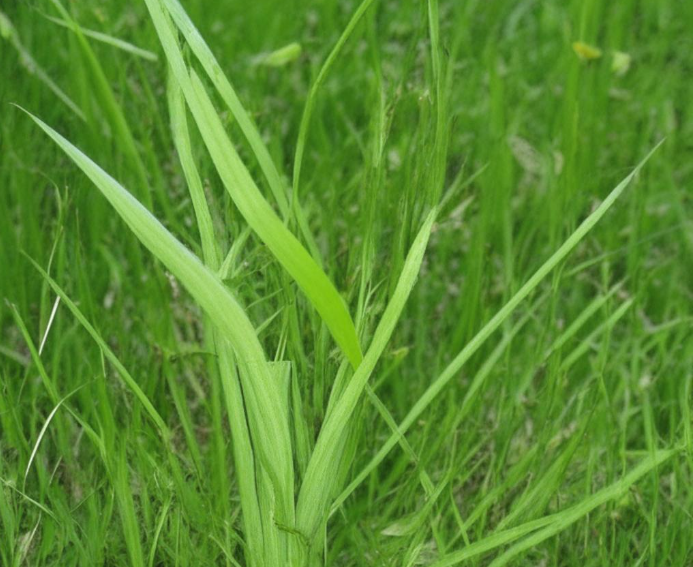
Crabgrass is a pervasive and unwelcome sight in yards across the United States. It predominantly grows in the northern part of the country as Digitaria sanguinalis, and in the south as D. ischaemum. Both species can produce an astounding 150,000 seeds annually that can re-germinate each spring if environmental conditions allow.
This grassy weed is most likely to appear on lawns that have been under-watered, underfed, or poorly drained. Crabgrass plants are annuals that will die off at the end of each growing season–leaving behind countless tiny seeds that will cause even more damage year after year if not appropriately managed.
Once established on your lawn, crabgrass takes over with its thick growth habit, 2-foot-long blades, and lighter green color. Left unchecked, this pernicious weed will spread quickly across the lawn and be an unsightly nuisance. It’s essential to keep it from taking over your yard.
- Growth Patterns: Crabgrass is an annual weed that grows in clumps and spreads quickly.
- Physical Characteristics: Crabgrass has broad, flat leaves and produces thousands of seeds.
- Location: Crabgrass can be found in lawns, gardens, and disturbed areas, especially where the soil is compacted or poorly drained.
- Control Strategy: Use a pre-emergent herbicide in combination with fertilizer in early spring to prevent germination. Pull the weed or apply a targeted herbicide once it has germinated. Maintain a healthy lawn to create a dense canopy that inhibits crabgrass growth.
2] Annual Bluegrass (Poa annua)
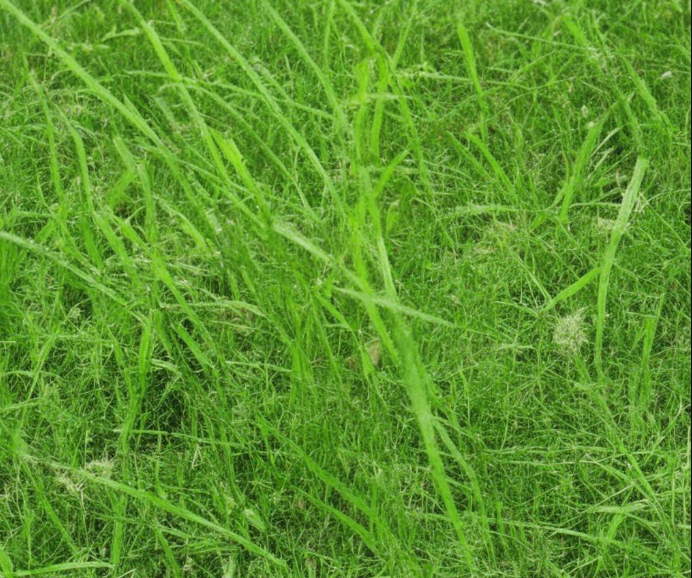
Annual bluegrass (Poa annua) is often mistaken for a desirable cold-season Kentucky bluegrass variety, as it bears an uncanny resemblance. This grassy weed can be identified by looking out for its distinctively brighter and lighter green color and the canoe-shaped tips of its blades.
Furthermore, a long ligule connects the blade to the stem’s base.
This bothersome plant thrives in shaded spots with excessive moisture, while direct sunlight will eventually dry it up and leave bare patches behind. It is essential to tackle annual bluegrass before it takes over your lawn.
- Growth Patterns: Annual bluegrass grows in dense patches with a shallow root system.
- Physical Characteristics: This weed has bright green, fine-textured leaves and produces light-colored seed heads.
- Location: Annual bluegrass thrives in moist, shady areas.
- Control Strategy: Create an unsuitable habitat by trimming trees and shrubs that provide shade, and ensure proper drainage in moist areas. Apply both pre-emergent and post-emergent herbicides, if necessary.
3] Yellow Nutsedge (Cyperus esculentus)
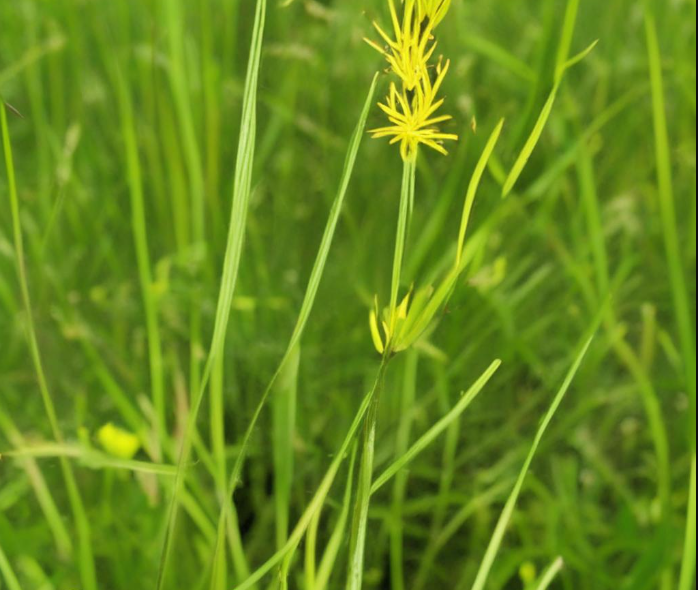
Yellow nutsedge is a pesky perennial weed that can spread above and below the soil. Its seeds are dispersed through the air above ground and through its rhizomes or tubers beneath the surface. Every growing season, it reappears with its light green grass blades that gradually darken as the weed matures. The best way to identify yellow nutsedge is by looking at its root system; nut-like tubers emerge from them, giving this grassy weed its name.
- Growth Patterns: Yellow nutsedge is a perennial grassy weed that grows in tufted patches.
- Physical Characteristics: This tall grass weeds has a triangular stem and yellow-green leaves with a shiny appearance.
- Location: Yellow nutsedge is often found in poorly drained or compacted soil.
- Control Strategy: Keep your lawn healthy and well-maintained to prevent invasion. Use a post-emergent herbicide on established plants or hand-pull the weeds, obliterating all plant parts.
4] Green Foxtail (Setaria viridis)

Green foxtail (Setaria viridis) is a common weed that closely resembles wheatgrass in appearance. It has a light green coloration, slender and pointed leaves with a rough texture, and smooth stems with small white branches near the tip.
- Growth Patterns: Green foxtail is an annual weed that grows in dense, bushy clusters.
- Physical Characteristics: It has soft, flat leaves and a foxtail-shaped seed head.
- Location: Green foxtail is often found in disturbed areas, such as lawns, gardens, and roadsides.
- Control Strategy: Pull the plant before it goes to seed, or use a selective post-emergent herbicide if the invasion is extensive. Apply a pre-emergent herbicide to prevent germination in the spring.
5] Couch Grass (Elytrigia repens)
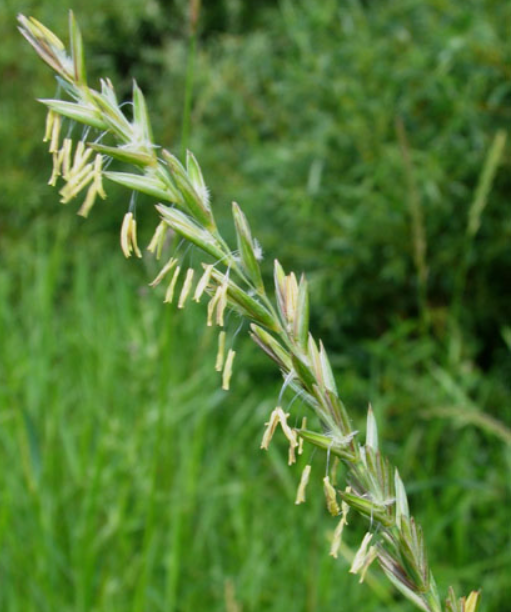
The couch is an incredibly hardy weed that commonly goes by several names, such as couchgrass and quackgrass. This pest is found in sunny and shady areas and spreads through its underground rhizomes and airborne seeds. As it establishes itself, the root system can become complicated to remove altogether, so it’s best to catch it early.
Couch has a coarse texture and usually appears on lawns in patches of blue-green hue that can be difficult to differentiate from desirable grasses. Its blades are finger-like and curl around the stem at the bottom of the plant. It’s essential to identify this weed quickly to prevent further spread.
- Growth Patterns: Common couch grass is a perennial grassy weed that spreads quickly through underground stems.
- Physical Characteristics: It has broad, flat leaves and produces a seed head with small spikelets.
- Location: Couch grass can be found in lawns, gardens, and disturbed areas.
- Control Strategy: Manual removal is the most effective control measure, as it prevents the spread of rhizomes. Spot-treat established plants with a post-emergent herbicide and apply a pre-emergent herbicide in early spring. Regular mowing and watering can also help to reduce its prevalence.
6] Wild Onion (Allium canadense)
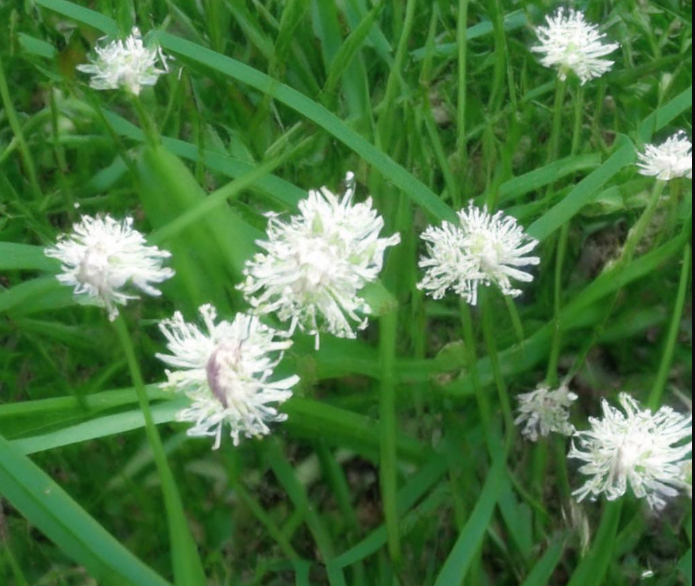
Wild onion (Allium canadense) is a perennial weed found in lawns and gardens nationwide. It has an unmistakable aroma and leaves a pungent odor when brushed against or mowed. The plant produces clusters of thin, hollow white stalks with narrow, light green blades, making it easily identifiable from other grassy weeds.
- Growth Patterns: Wild onion is a perennial grassy long grass weed that grows in dense bunches.
- Physical Characteristics: This weed has long, thin leaves with white flowers and an onion-like odor.
- Location: Wild onion typically grows in lawns, gardens, and disturbed areas.
- Control Strategy: Manual removal is the most effective control measure for wild onions. If necessary, spot-treat established plants with a post-emergent herbicide. Regular mowing and watering can help to reduce its prevalence.
7] Wild Garlic (Allium vineale)
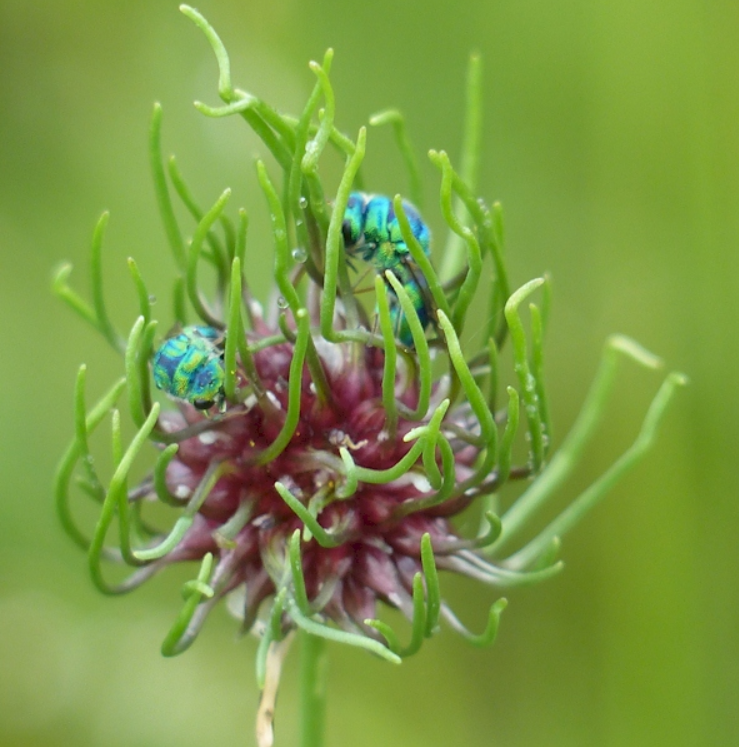
Wild garlic (Allium vineale) is a grassy perennial weed found in lawns, gardens, and disturbed areas. It has long, thin leaves with white flowers and an unmistakable garlic-like odor. This weed quickly takes over turfgrass lawns with its shallow roots and dense patches of growth.
- Growth Patterns: Wild garlic is a perennial grassy weed that grows in clumps and spreads quickly through underground stems.
- Physical Characteristics: This weed has long, thin leaves with a garlic-like odor and white flowers.
- Location: Wild garlic can be found in lawns, gardens, and disturbed areas.
- Control Strategy: Manual removal is the most effective control measure for wild garlic. If necessary, spot-treat established plants with a post-emergent herbicide. Regular mowing and watering can also help to reduce its prevalence.
8] Quackgrass (Elymus repens)
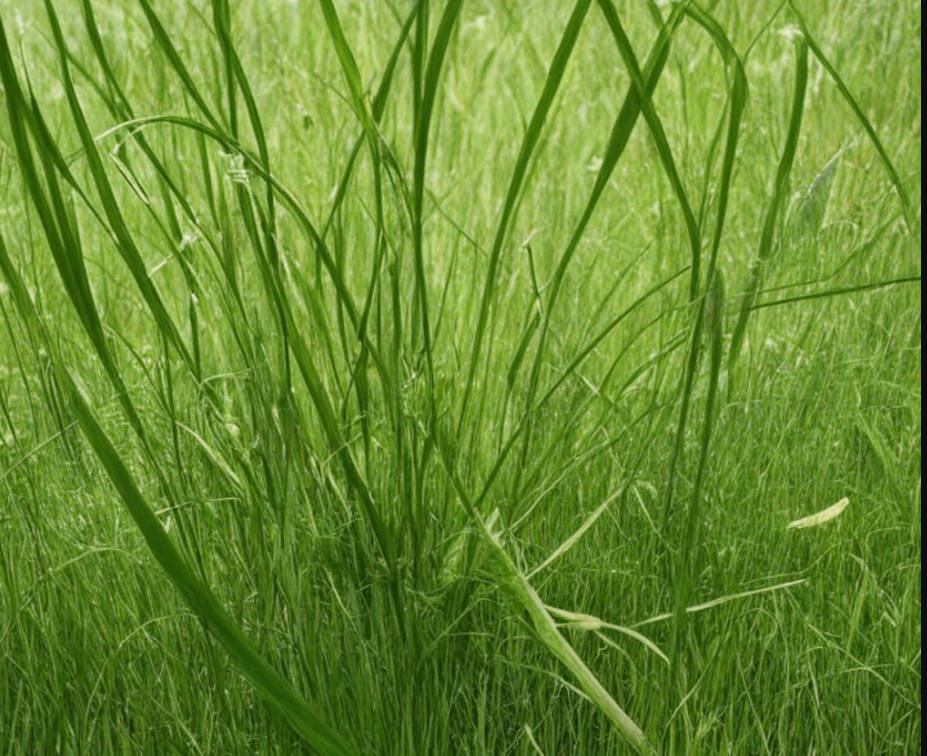
Quackgrass (Elymus repens), also known as couchgrass or twitchgrass, is an aggressive perennial grass considered a weed in many lawns, pastures, and other turf areas. Growing in dense clumps with a light-green to bluish-green color and coarse texture, it can quickly spread through underground stems called rhizomes, making it difficult to control once established. As a result, desirable grass species may be crowded out, and the area is left looking uneven and untidy.
- Growth Patterns: Quackgrass is a perennial weed that spreads through underground stems.
- Physical Characteristics: It has thin, dark green leaves and narrow seed heads.
- Location: Quackgrass can be found in moist, poorly drained soils and frequently invades lawns and gardens.
- Control Strategy: Cultivate the soil to encourage deep root growth and choke out quackgrass. Pull the weeds or use a post-emergent herbicide for more severe infestations. Prevent regrowth by maintaining a healthy lawn and improving drainage.
9] Tall Fescue(Festuca arundinacea)
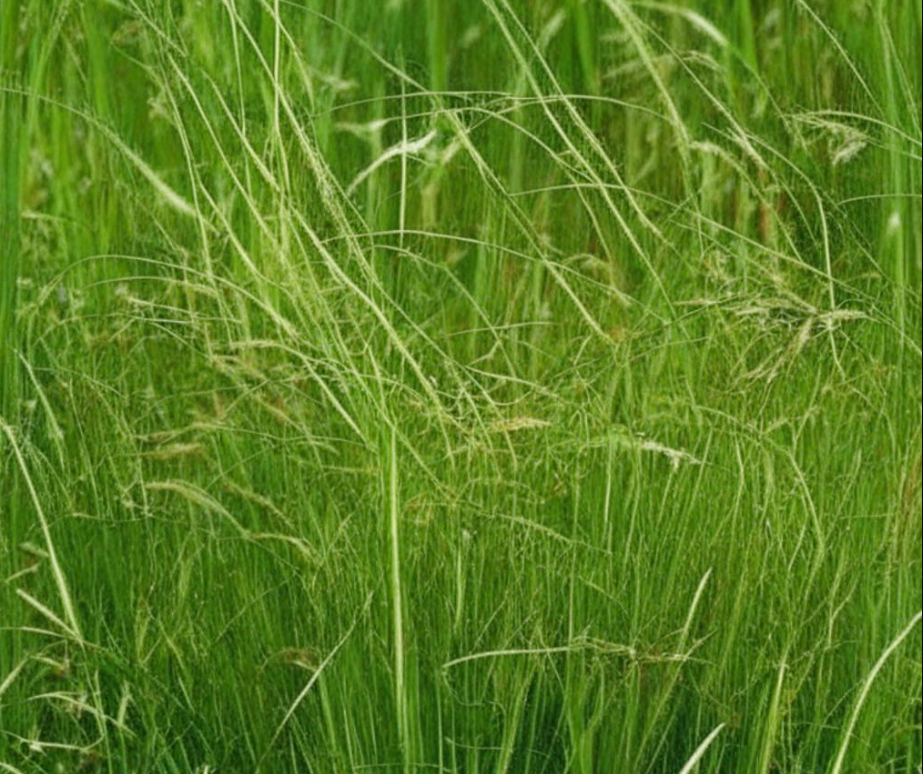
Tall fescue has broad, thick leaves with prominent veins running down their length. This gives them a coarser texture than most other grasses and a vibrant green color to both the upper and lower surfaces of the blade. Its attractive qualities make it a desirable lawn grass, though it can often take over without an invitation. The features that make tall fescue hot make it a formidable adversary in your yard.
- Growth Patterns: Tall fescue is a cool-season grass that forms clumps and spreads through underground stems.
- Physical Characteristics: It has broad, flat leaves with a coarse texture and produces seed heads in the summer.
- Location: Tall fescue is most commonly found in lawns, pastures, and disturbed areas.
- Control Strategy: Pull the weed or use a post-emergent herbicide if necessary. Fertilize to encourage deep root growth and maintain a healthy soil structure by aerating or topdressing.
10] Johnsongrass (Sorghum halepense)
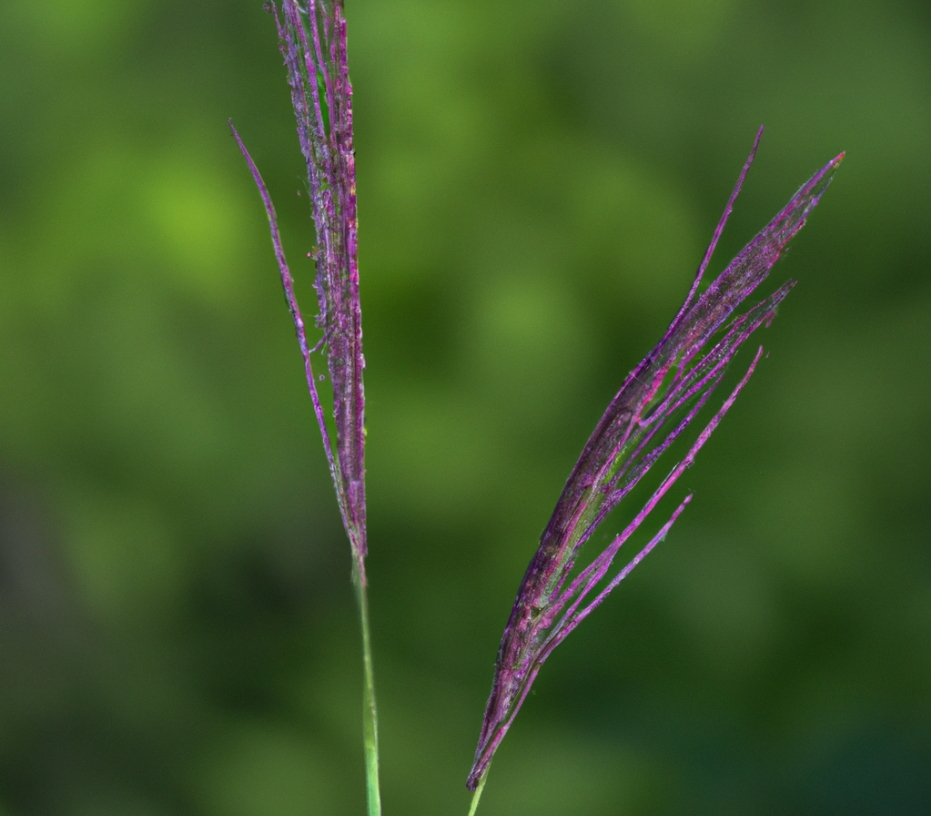
Johnsongrass is a type of perennial weed that is relatively simple to identify and manage. In its early stages, it looks very similar to corn seedlings. Allowed to grow unchecked, it can reach over seven feet tall. Its seed head starts green before transitioning into a deep purplish maroon color. As johnsongrass matures, you can spot it due to its thick leaves (up to an inch in width) with the distinctive white vein running down the center of each blade.
- Growth Patterns: Johnsongrass is a perennial weed that spreads quickly through underground stems.
- Physical Characteristics: It has broad, flat leaves and thick seed heads with bristly awns.
- Location: Johnsongrass can be found in lawns, gardens, and disturbed areas.
- Control Strategy: Cultivate the soil to encourage profound root growth and choke out Johnsongrass. Pull the weeds or use a post-emergent herbicide for more severe infestations. Prevent regrowth by maintaining a healthy lawn and improving drainage.
TALL GRASS & WEEDS FACTS AT A GLANCE
- Lawns with grass and weeds over 12 inches high violate the tall grass and weed ordinance.
- This unattended foliage is an open invitation to crime and vandalism while providing a breeding ground for health-threatening pests like rats.
- Moreover, such overgrown areas pose a serious safety hazard.
- Therefore, it is essential to keep lawns trimmed and neat to maintain both appearance and security in the community.
Related FAQs
Is grass a male or female?
Most grass species are not strictly male or female but rather monoecious (having both male and female reproductive structures). Grasses reproduce using seeds produced in the seed heads, which contain pollen and ovules. The pollen is transferred to the flower’s female parts (the stigma), fertilizing it and forming a seed.
What are invasive grasses in lawns?
Invasive grasses are non-native grassy weeds that can quickly crowd out desirable lawn species. These invasive species are often more aggressive and difficult to control than native varieties and can harm a healthy lawn. Examples of common invasive grasses include wild onion, wild garlic, quackgrass, tall fescue, and johnsongrass.
Final Words
Keeping grass and weeds away from your lawn is essential for aesthetic and safety reasons. To maintain an attractive, secure property, it is necessary to correctly identify any undesirable species present in the area and then devise an effective control strategy. Pulling the weeds or using post-emergent herbicides may be required, depending on the severity of the infestation. Regular mowing and watering can help to reduce the prevalence of tall grass and weeds. Properly caring for your lawn will ensure that it remains healthy, beautiful, and safe.

Douglas Mackalie is a Founder of Mackalies Garden. He is one of the most exciting people you’ll ever meet. He has 25 years of experience in horticulture and gardening, most of which he’s spent outdoors getting his hands dirty.
